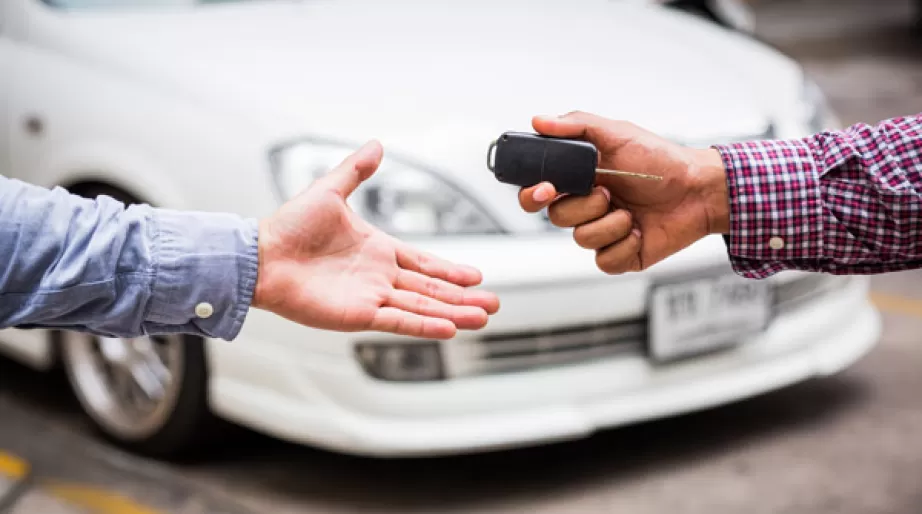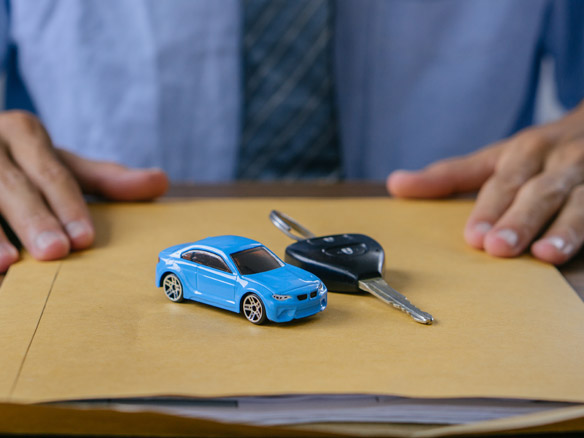Transfer of Car Ownership and Deregistration in Singapore [A Step-by-Step Guide]


Transferring ownership and deregistration of cars can be a hassle. The same goes for filing and submitting documents to the government. However, these things can be done in Singapore through the official Singapore Government platform – making vehicle registration procedures accessible and convenient.
Using your SingPass 2FA account, you can access the country’s Land Transport Authority. This allows you to file for different processes for your vehicle online. If you’re curious about how vehicle transfer and deregistration work, this article will help you make progress.
Step-by-Step Process to Transfer Vehicle Ownership
A vehicle ownership transfer is a legal requirement in Singapore, and it occurs when a second-hand vehicle is bought, sold or passed into the care of another. The process of vehicle ownership transfer must be completed within seven days.

Before the LTA approves the transfer, both parties should take note of the following considerations:
-
The vehicle to be transferred should have no financial issues.
-
Road tax arrears, fees, fines, and similar expenses should all be paid.
-
The car should no longer be under financing.
-
Vehicles registered with a Category A or B certificate of entitlement (COE) should be at least three (3) months old before being transferred.
How to Transfer Ownership of Your Vehicle
-
Find a New Car Owner
Finding a new car owner is essential before using your Singpass 2FA. You can be giving it to someone or found a new buyer. Selling it by yourself means you get to save on the sale value that would otherwise go to the broker or middleman. However, it might take longer to find a dealer without buying and selling professionally.

If you go through a broker or car dealer, you can put up the vehicle under their name through a temporary transfer of vehicle scheme. Also, you might want to make sure that the dealer you’ll be working with, is a CaseTrust-SVTA certified dealer.
-
Settle the Remaining Financial Obligations
The LTA requires any vehicle to be sold or transferred to have all its outstanding taxes, fees, and debts settled. All these should be done before being allowed to be sold or given to another owner. If you’re going through a vehicle dealer, they can pay the outstanding financial obligations for you.
-
Apply for the Transfer Process
You can personally visit the LTA Customer Service Centre or use your SingPass 2FA login. The convenient online process applies to almost every vehicle. However, if the vehicle to be transferred was for diplomatic use, a Light Goods Vehicle (LGV), or one owned by a deceased owner, you might be required to visit the LTA Customer Service Centre personally.
Also, if you’d rather keep your vehicle number, you can opt to do so before pushing through with the transfer.
Requirements
For the seller, the following details are required when initiating a vehicle ownership transfer:
-
The vehicle’s registration number.
-
National Registration Identification Card (NRIC) or the next owner’s Foreign Identification Number (FIN) number.
-
The contact number of the next owner. They will receive an SMS message telling them about the transfer. Recipients have five days to confirm the upcoming vehicle ownership transfer.
-
The next owner will have to log into the OneMotoring platform and accept the transfer. There is a required $25 fee.
-
Both parties will receive an SMS confirming that the vehicle ownership transfer has been confirmed and accepted.
Reminders for the Next Owner of a Car Transfer
Since buying a car is a significant financial decision, consumers should check the following items to ensure a smooth and problem-free transaction:

-
The vehicle needs valid and subsisting motor insurance in the buyer’s name and should indicate full coverage for the full period of the applicable vehicle’s road tax.
-
The vehicle for transfer must have passed complete vehicle inspections from any inspection centre authorised by the Land Transport Authority. This especially applies to those requiring vehicle inspection before any road tax renewal.
-
An additional levy is imposed on the buyer for vehicles with Category A or B COE within 4 to 6 months from registration. You’d want to check if the Quota Premium paid for the COE is below that same car’s COE category at vehicle transfer. The additional fee corresponds to the difference between the two QPs.
-
For light goods vehicles (LGV), a valid farm or hawker licence from the Singaporean government is required.
-
For heavy goods vehicles (HGV), a vehicle parking certification named after the buyer with full coverage for the vehicle’s valid road tax is required.
Additionally, the Consumers Association of Singapore (CASE) has released a complete SAFE Checklist to help potential buyers check the vehicle they’re getting.
Vehicle Transfer for Foreigners Who Have No SingPass 2FA Account
For foreigners who are not eligible for a SingPass account, they’ll have to set personal appointments with the LTA. In this case, both the current owner and the next owner must be physically present on the appointment date.

Below are the requirements for both parties:
-
A duly-accomplished M01 application form.
-
Identification documents for both the current and the next owner.
-
A $25 transfer fee is payable through SGQR PayNow or NETS.
-
Additional levy as mentioned above.
-
Motor insurance certificate named after the next owner, with coverage for the whole period of the valid road tax.
-
Original vehicle inspection certificate from an LTA-authorised inspection centre, especially where inspection is required before road tax renewal.
Deregistration refers to the cancellation or forfeiture of a vehicle, meaning that you’ll stop using it within Singapore. This can happen for various reasons, mainly when the vehicle is no longer usable or of value to the original owner.

It is important to note that it must be appropriately disposed of upon deregistering a vehicle through scrapping or exporting it. The Singapore government allows temporary storage in any Export Processing Zone (EPZ) while the vehicle awaits export. Once the vehicle has been disposed of, the owner can receive PARF/ COE rebates. This depends on the type and age of the vehicle and the expiry date on the COE.
According to LTA regulations, failure to present and submit proof of disposal of the deregistered vehicle is considered an offence. Similarly, the use or personal storage of supposedly deregistered vehicles is not allowed.
How to Deregister a Vehicle
Citizens can apply for the procedure through their SingPass 2FA. For foreigners and other people not eligible for SingPass, they’ll have to request an appointment with the LTA Customer Service Centre.
Once the deregistration of the vehicle has been confirmed, the owner must dispose of the vehicle through any of the following methods:
-
Disposal at an LTA-authorised scrapyard
-
Get the vehicle exported. Temporary storage pending exportation at an LTA-appointed EPZ is also acknowledged.
Similarly, you can enlist the services of a motor dealer to help you handle the vehicle disposal requirement. It is recommended to deal with CaseTrust-SVTA accredited vehicle dealers.

It is also important to note that there are additional deregistration procedures for the following cases:
-
Vehicles lost through theft
-
Vehicles lost through a Criminal Breach of Trust
-
The current owner has passed away
-
The vehicle belongs to an undischarged bankrupt owner
-
Vehicles used by or belonging to a diplomat
Additionally, owners looking to deregister vehicles should be aware of the difference between a PARF-eligible vehicle and a non-PARF or COE vehicle. Essentially, a Preferential Additional Registration Fee (PARF) vehicle is one that still uses its original Certificate of Entitlement (COE). Non-PARF of COE vehicles is those that have renewed their COE. This also determines whether the vehicle for deregistration is eligible for a PARF rebate.
Deregistration of PARF Eligible Vehicles
Properly deregistering a PARF-eligible vehicle makes the owner eligible for a rebate. Below are the steps in deregistering your PARF vehicle:
-
Apply for deregistration through the SingPass 2FA portal.
-
Dispose of the vehicle or have it exported.
-
Upload the disposal or exportation documents of the deregistered vehicle through the SingPass 2FA. It must be accomplished within one month from the deregistration date.
Deregistration of Non-PARF (COE) Eligible Vehicles
If you have renewed the COE of your vehicle, then it’s no longer considered PARF-eligible. Below are the steps to deregister:
-
Deregister the vehicle through the SingPass 2FA portal.
-
Get the vehicle disposed of or exported.
-
On the SingPass 2FA portal, choose Option 2 in the Digital Service. You’ll also have to choose the mode of how the vehicle was exported.
-
Upload the disposal documents on the digital platform.
Final Words
By transferring ownership or deregistering your car, you free yourself from the responsibilities of keeping a motor vehicle. This is particularly helpful for those looking to change vehicles or let go of a car they no longer need. By using their SingPass 2FA account, people can do most of these processes without having to leave home.
With streamlined online access to file for car deregistration or transfer car ownership, Singapore authorities make it easier for citizens to dispose of or transfer their cars. There are even procedures for people residing in the country without their own SingPass 2FA account to facilitate these motor vehicle transactions.
If you’re looking to get your first second-hand car, take a look at a few tips to help you make the most out of your hard-earned money. Then, follow the step-by-step procedures outlined above to ensure hassle-free transactions and penalties.
FAQs
How much does a change of ownership of a car cost?
A $25 fee is required for a change of ownership of vehicles.
Who pays to change ownership of a car?
The next owner or the buyer is required to pay the $25 fee.
Can I do a change of car ownership online?
Yes. Singaporean citizens with SingPass 2FA accounts can change car ownerships online. Foreigners without SingPass will require a physical appointment with the LTA.
Can I sell a deregistered car?
No person may sell or buy unlicensed or deregistered vehicles in Singapore. Doing so is an offence punishable by law.
Can I transfer vehicle ownership without insurance?
No. Valid motor insurance under the owner’s name is required. It should also cover the full period of the valid road tax for the transferred vehicle.
MSIG MotorMax Car Insurance
If your car doesn’t have motor insurance yet, better to get one now. The great thing about motor or car insurance is that you can find them easily online. A great example would be MSIG MotorMax. Our car insurance provides full coverage for your car and ensures that you are protected financially in the event of an accident. Don’t hesitate to give us a call to know more about MSIG MotorMax and its coverage.


